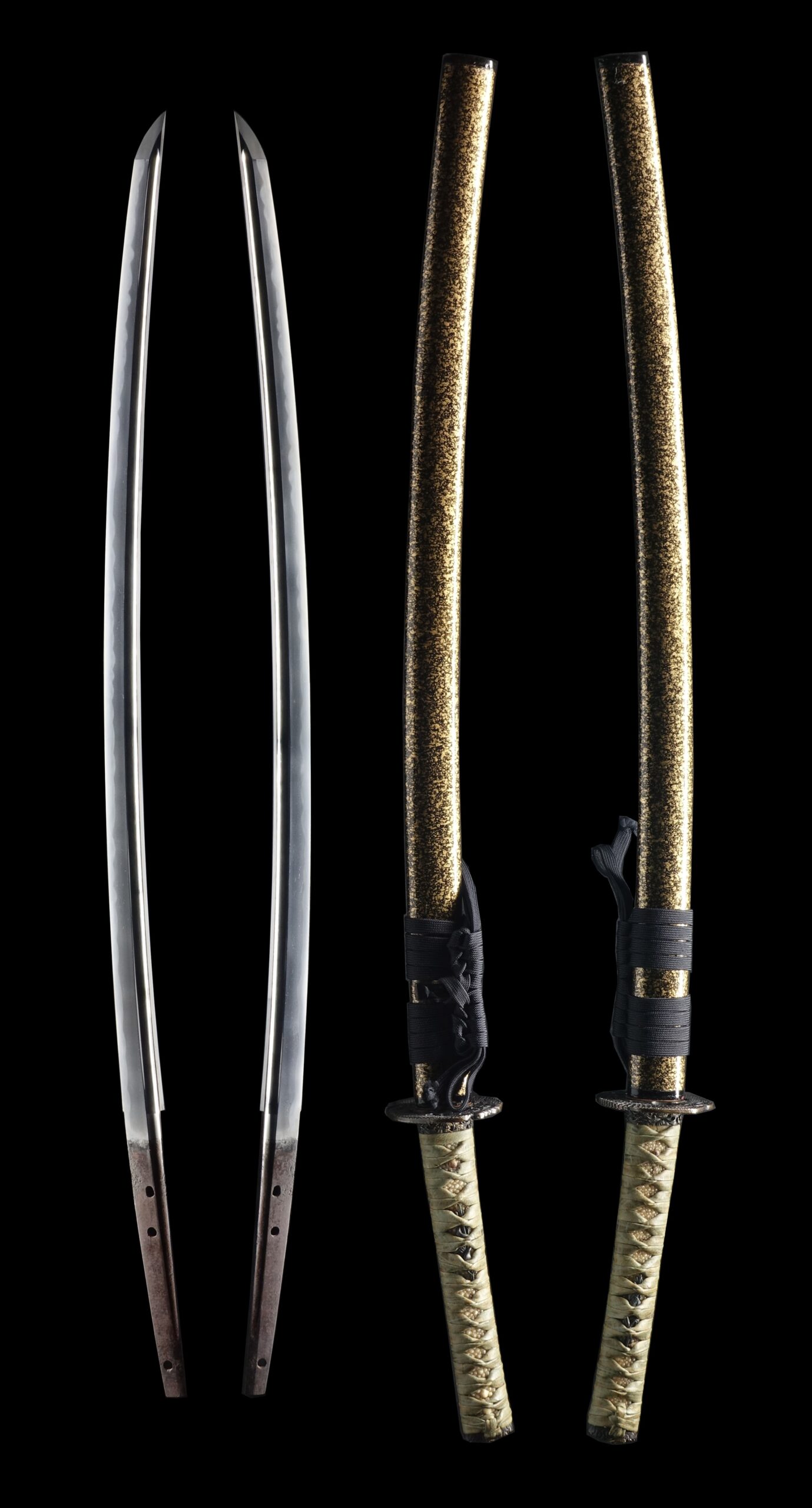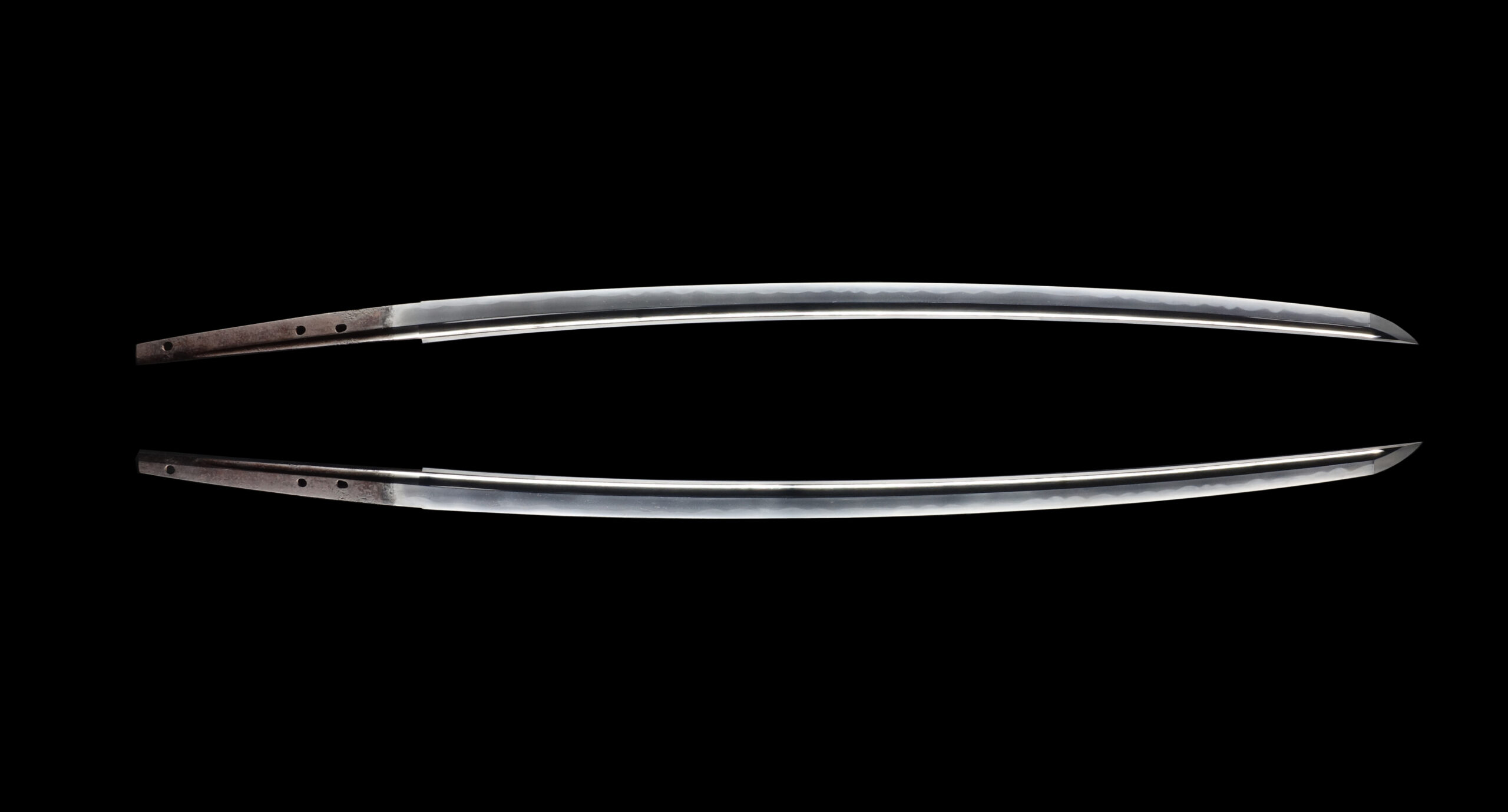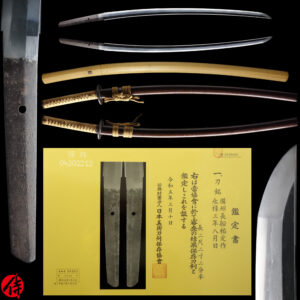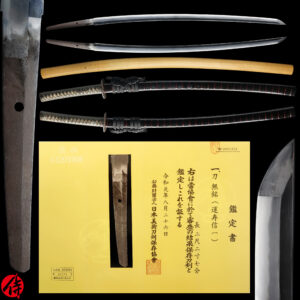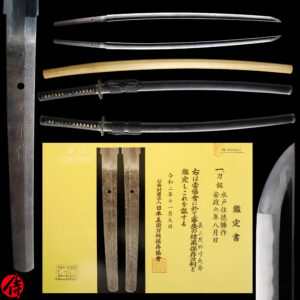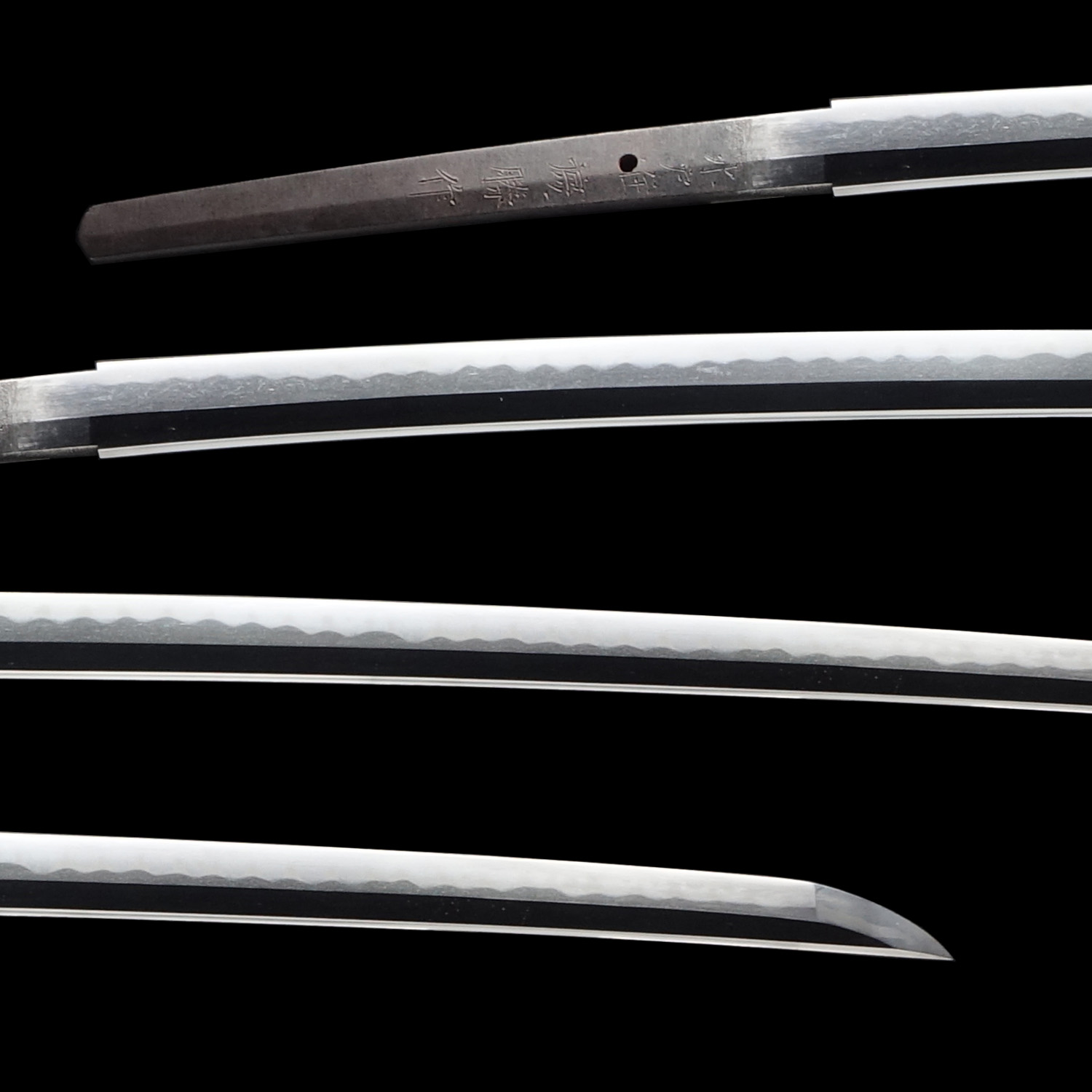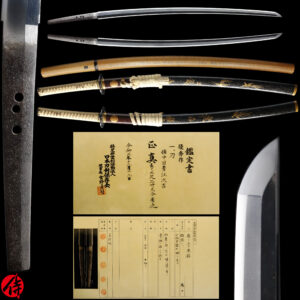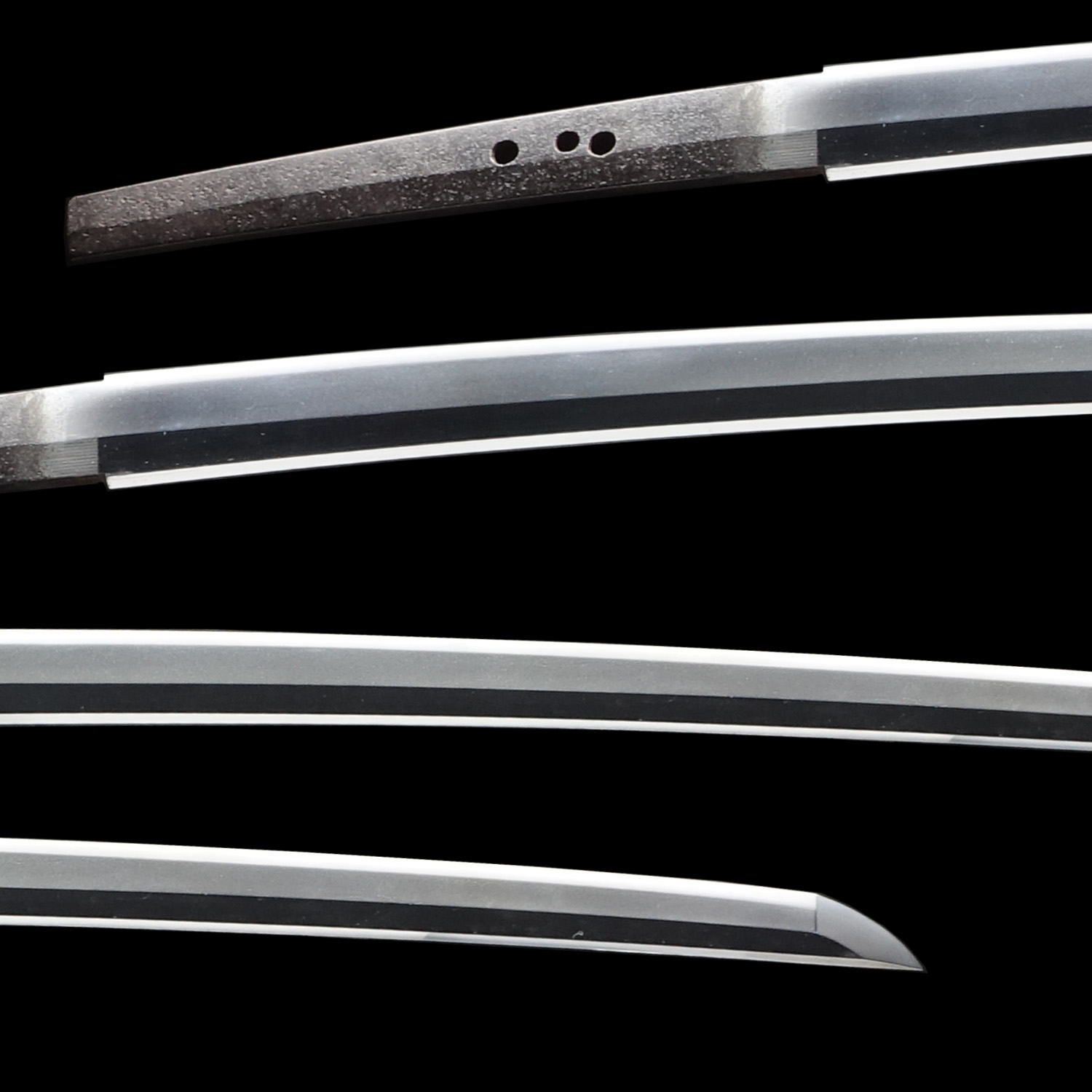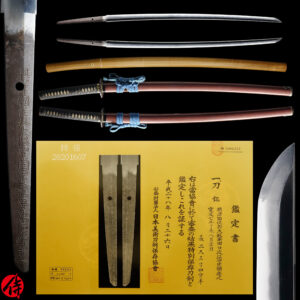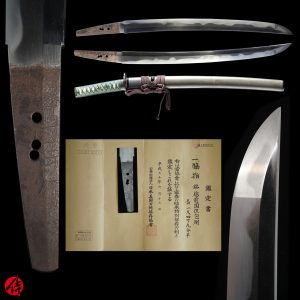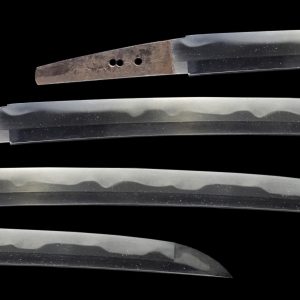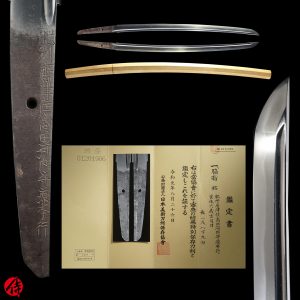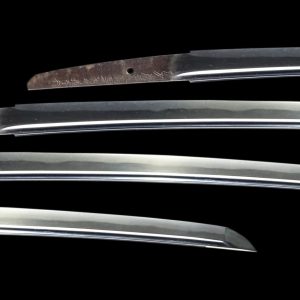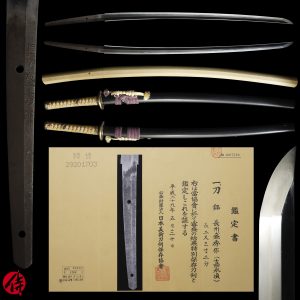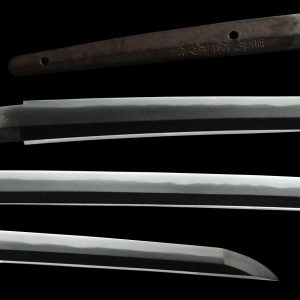Antique Japanese Sword Katana attributed to Sadatsuna with Tokubetsu Hozon Certificate
【Description】
This blade is attributed to Sekishu Dewa Sadatsuna (石州出羽貞綱), who was active during the Bunna-Koo era (1352-1390: mid-late Nanbokucho period). The maker’s Sadatsuna lasted three generations and we believe NBTHK’s attribution was given to the first generation. Sekishu is the province located in today’s Shimane prefecture. And Dewa is the name of the village.
Sadatsuna was the son of the first-gen Naotsuna, one of the ten apprentices of Masamune. Masamune is one of the most famous swordsmiths in Japanese history. Those ten apprentices are called Masamune Jittesu (正宗十哲).
The first-gen Naotsuna, his father originally resided in Sagami province (today’s Kanagawa prefecture) to master OSHU DEN tradition from Masamune. Then, Naotsuna moved to Sekishu (Today’s Shimane prefecture). The maker’s name Naotsuna also lasted four generations.
When Sadatsuna was active in the Nanbokucho period, Japan was tumultuous because the imperial court was split into two sides(south and north). There were many conflicts, and many Samurai were deployed. And Sadatsuna must have dedicated himself to forging high-quality blades for those Samurai who fought in battles.
Sekishu is also known as Iwami koku and it was famous for producing the high-quality carbon steel for the Japanese sword. We presume Sadatsuna had easy access to this exceptionally great carbon steel to create his swords.
It is appraised as a Tokubetsu Hozon Token(特別保存刀剣) issued by NBTHK(Nihon Bijutsu Touken Hozon Kyokai:日本美術刀剣保存協会). This authentication paper was only given to authentic Japanese swords, especially well preserved and high quality with artistic value.
*Please keep in mind that there are a couple of minor Kitae kizu on Hi (groove on the blade). If you like to know more details, please feel free to contact us.
【 Blade】
Cutting Edge Length(Nagasa): 69.7 cm (27.4 inches)
Curvature(Sori): 1.8 cm (0.70 inches)


Hamon:
The crystalline structure which forms along the cutting edge of a blade as a result of the hardening process
Jimon(Jihada):
visible steel surface pattern created by folding and hammering during forging process
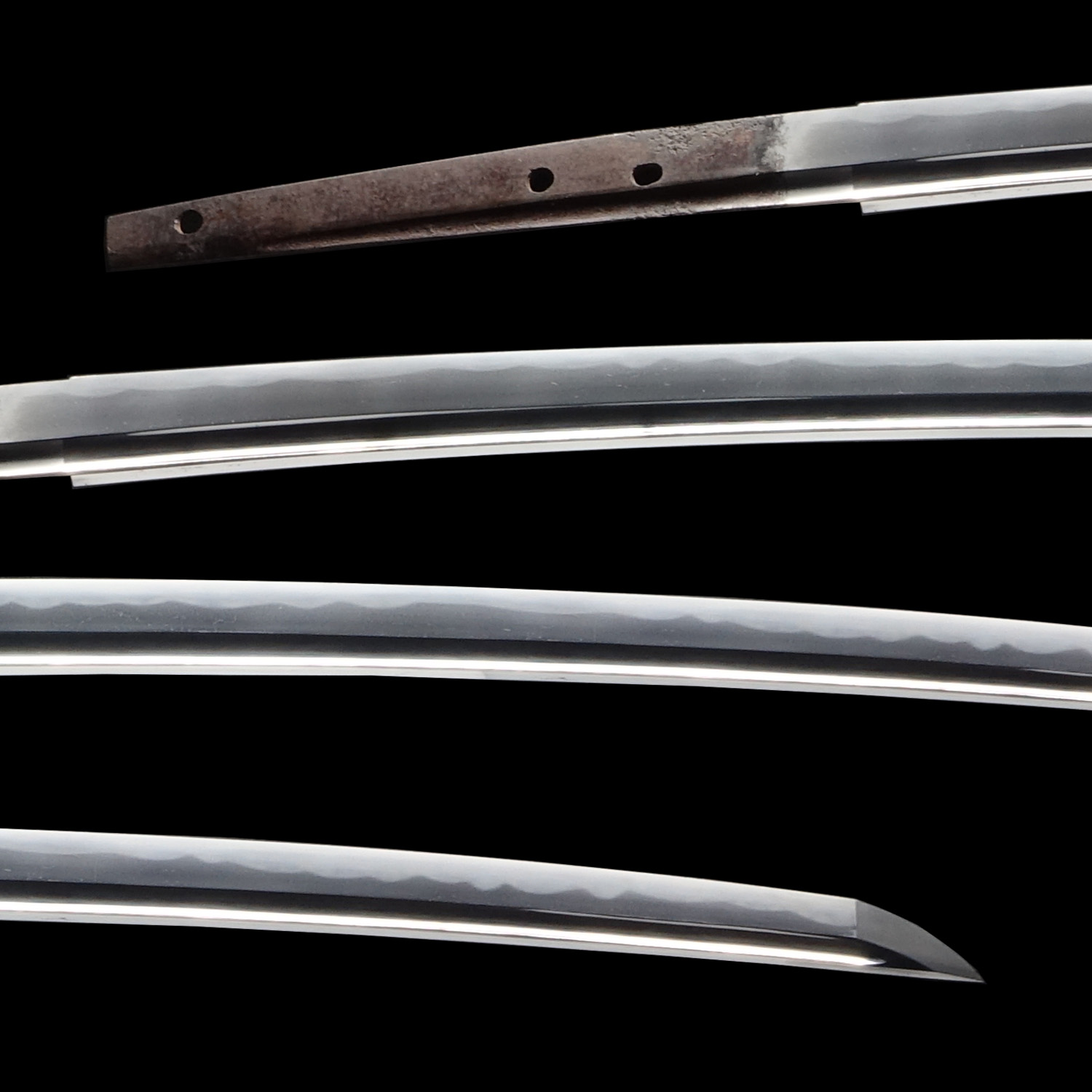
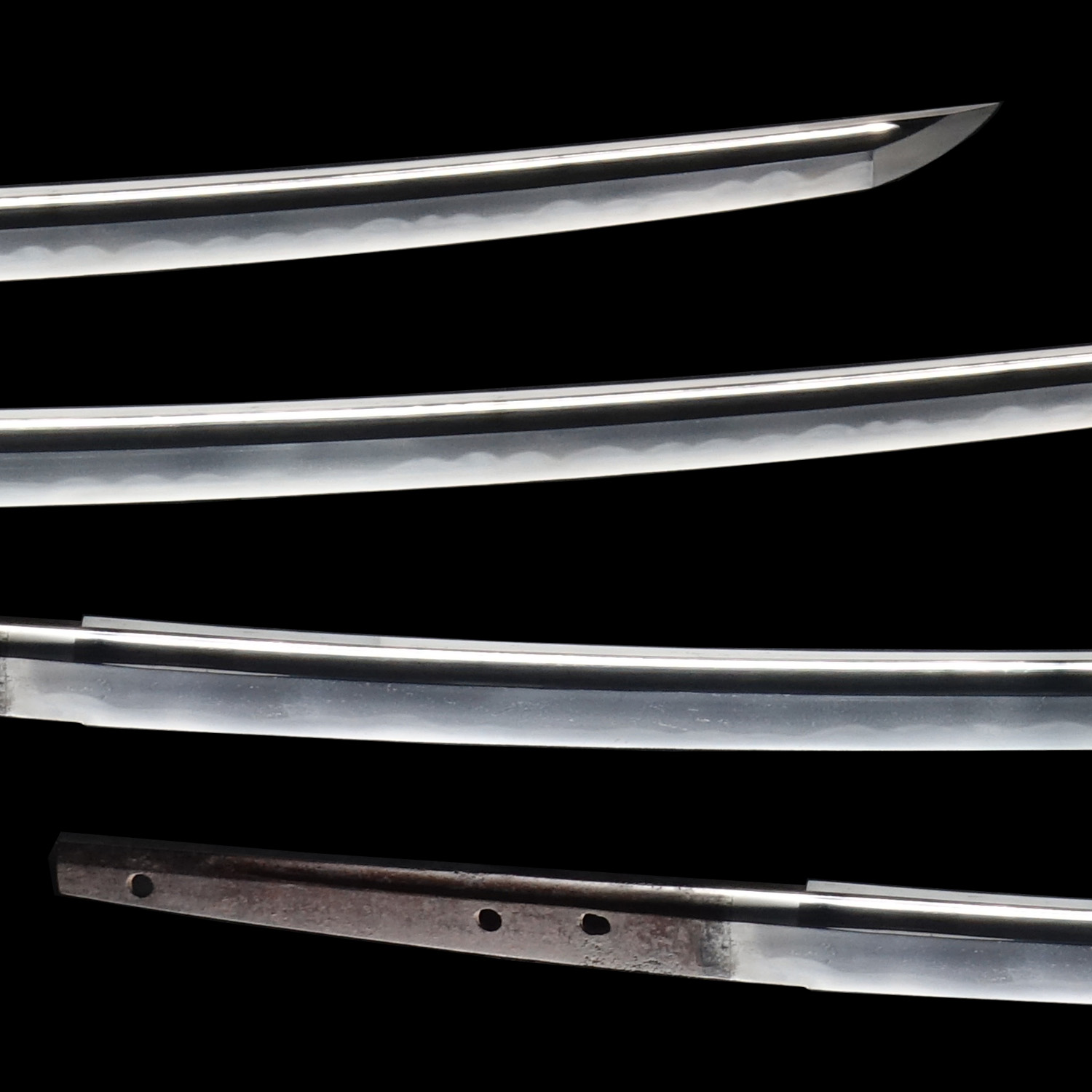


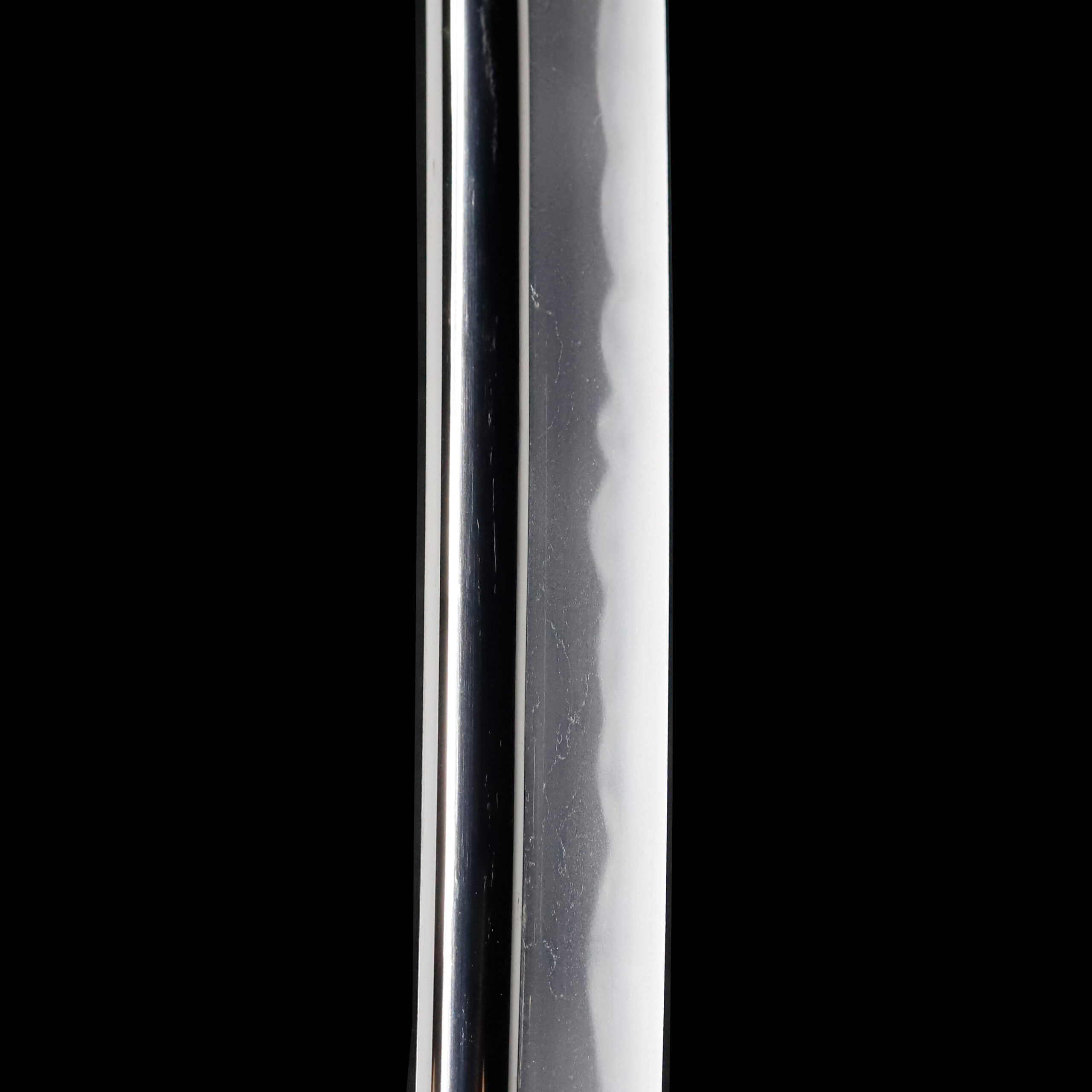
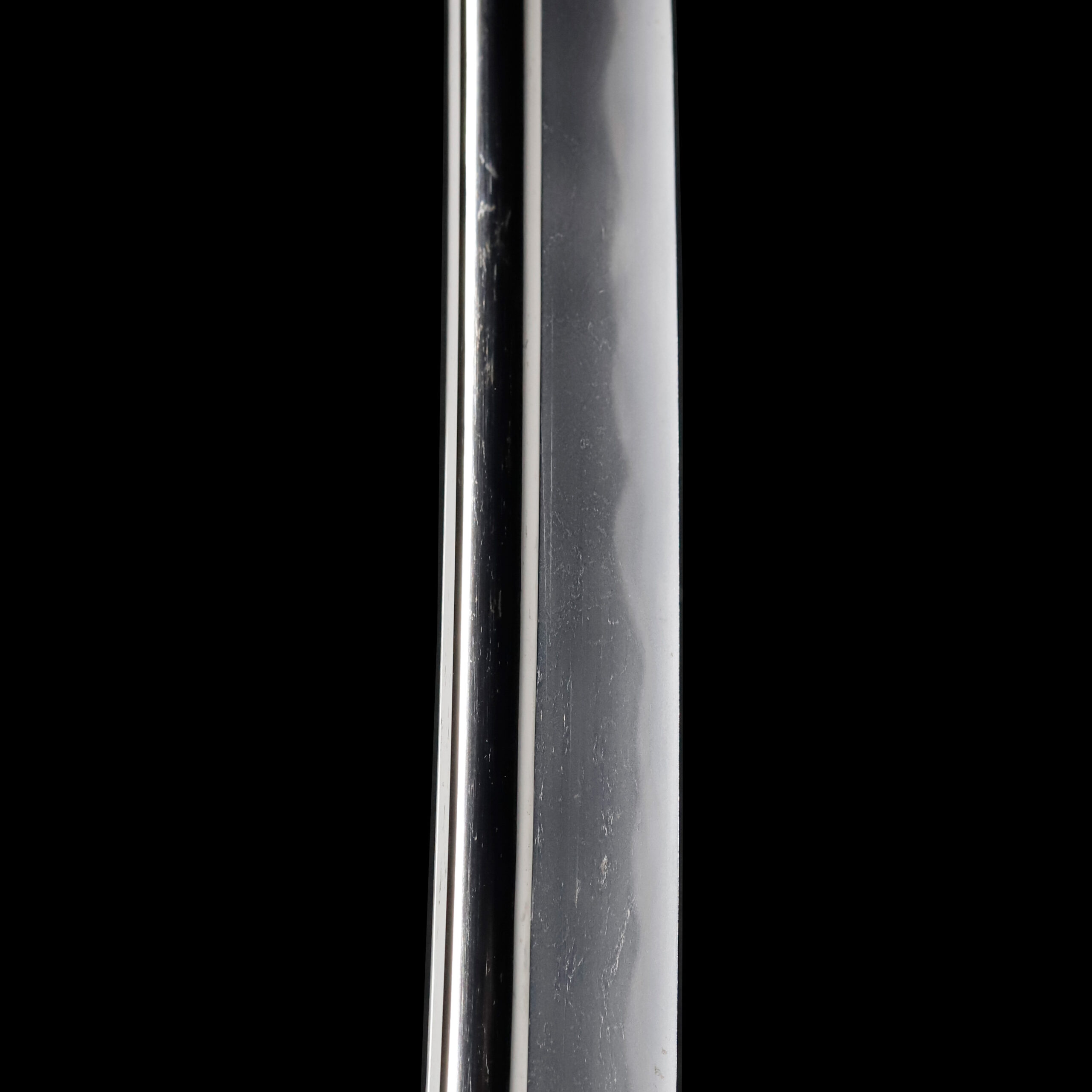
Nakago:Nakago is the tang of the Japanese sword.
Japanese swordsmiths left the black rust on the tang because it prevents red rust while the tang is in its handle. And the discoloration of the tang was created over time, and it is a great indicator for a Japanese sword specialist to estimate when the sword was forged.

Koshirae: Koshirae is the mounting of the Japanese sword. There are several parts that consist of Koshirae such as Saya(Scabbard), Tsuka(Handle), Tsuba(Handguard).

Fuchi-Kashira:A pair of matching sword fittings that cover the upper and bottom parts of its sword hilt.
We assume the theme of Fuchi Kashira is the Kassen Zu (合戦図). You would find the figures of Samurai warriors fighting with swords. So, this Fuchi Kashira depicts the scenery of a waterside battlefield. Since they wear luxurious armor and fight on horseback, we assume they are Samurai of a certain high status.
The Kassen Zu is also seen in the Byoubu (屏風, folding screen) works. According to a theory, Kassen Zu designed folding screens that were made after the beginning of the Edo period. Therefore, many of them did not necessarily depict reality as it was. For that reason, we often find inconsistencies in Kassen Zu Byoubu based on historical research. The Kassen Zu was more concerned with showing authority than historical accuracy, and political intentions were involved.
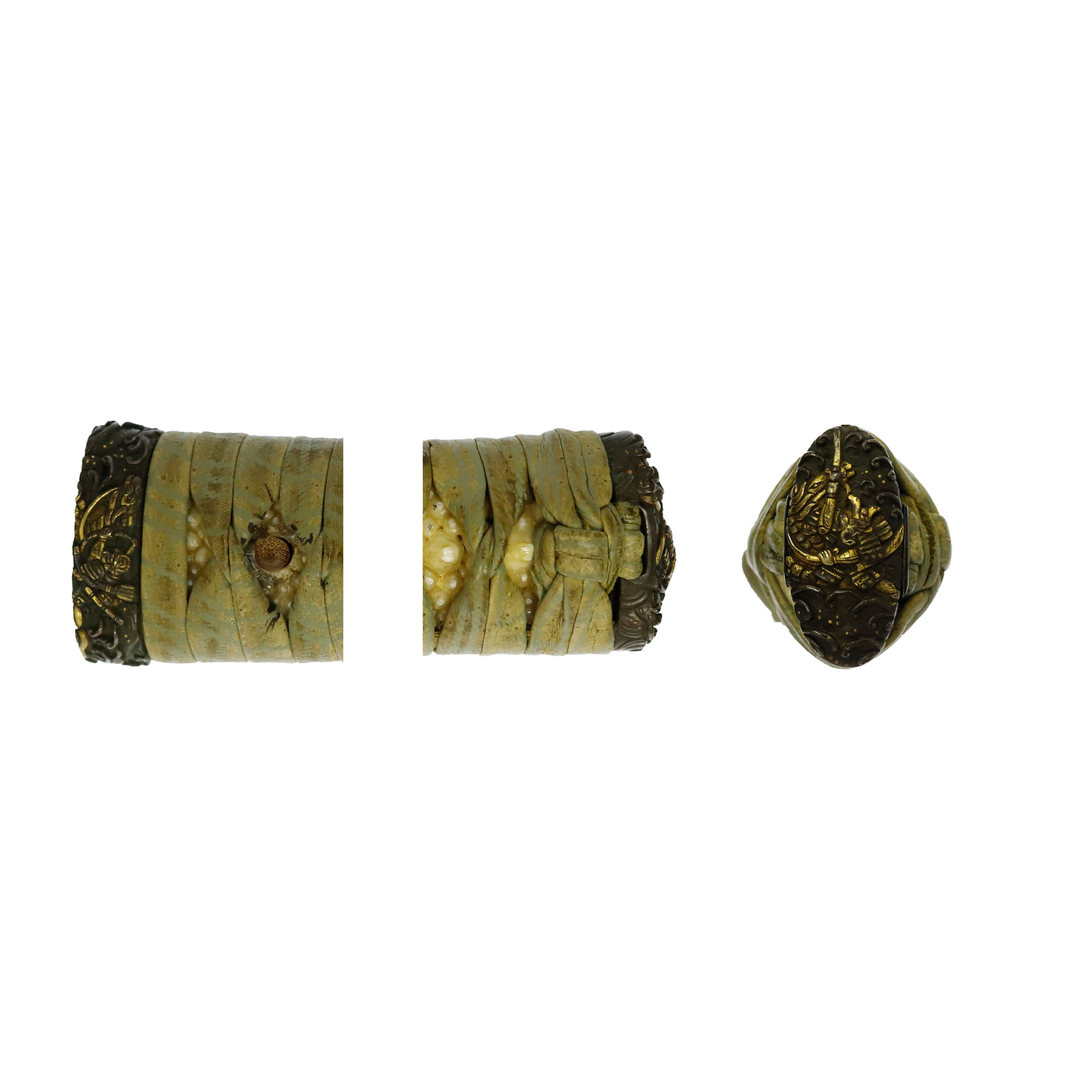
Tsuka and Menuki:Tsuka is the handle of the Japanese sword and Menuki is its decoration.
We estimate it is a combination of Samurai-related tools from what we could see from the gaps of the Tsukamaki thread. For example, we could find a long stick with a strip of cloth. We believe it is a Hatajirushi (旗印, flag). Flags with letters or family crests on Hatajirushis were used on the battlefield to show one’s affiliation.
On the lower side Menuki, you would find a Gunbai (軍配, Sumo referee’s fan today) is incorporated here. The Gunbai is a tool that is related to the Samurai culture. Its shape is an Uchiwa (団扇, Japanese fan). Fans were brought to Japan from the continent in the Nara period (710-794). According to a theory, Uchiwas were used in the court or the aristocracy back then. In addition, after the Ohnin-Bunmei era (応仁・文明年間, 1467-1487), military commanders used Gunbai-Uchiwa (軍配団扇), which is made of leather or iron. They encouraged their subordinates by using it. Also, it was used for ordering the arrangement of an army: For example, the placement of troops, the date and time of the advance, and retreat. It is the origin of the Gunbai, which Sumo (相撲, Japanese wrestling) referees use to judge victory or defeat today. In this way, metalworks that incorporate motifs related to Samurai costumes into sword mountings are often seen. It might have encouraged Samurai warriors who went to battlefields.

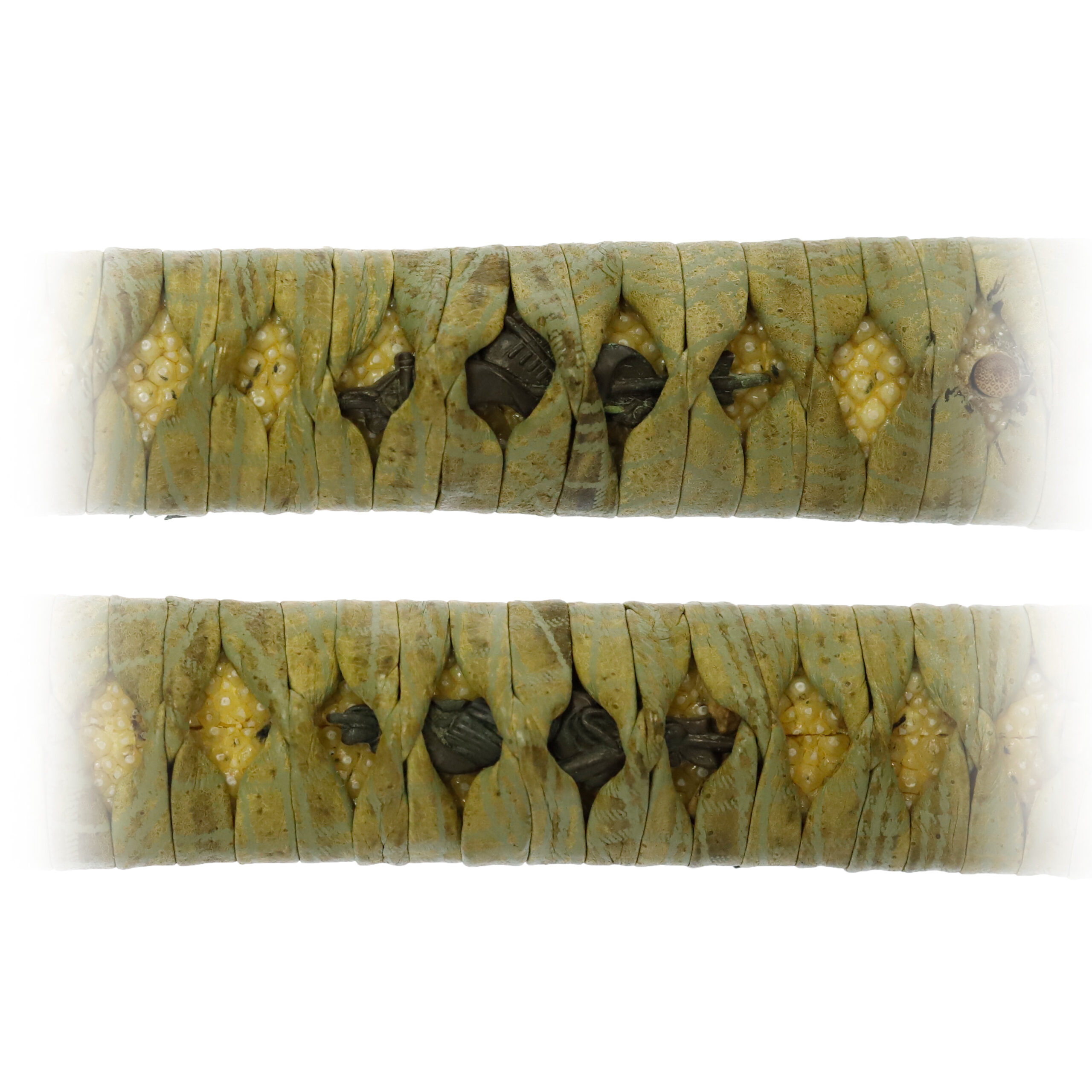
Tsuba and Habaki:Tsuba is the handguard for the Japanese Sword and Habaki is the equipment to make the blade not touch its scabbard inside. It prevents the blade from getting rusty and chipped.
This Tsuba is composed of the figure of a dragon. The dragon creates this shape by twisting its elongated body into a ring. The bellows pattern on this dragon’s belly and the scales covering its body are each engraved clearly. Initially, the dragon was an imaginary creature found in ancient foreign traditions and myths. Furthermore, it is regarded as a symbolic beast of auspicious signs. Its body is likened to nine animals: antlers are deer, the head is a camel, eyes are demons, the neck is a snake, the belly is the Mizuchi (蛟, a mythical animal in Japan that looks like a snake and has a horn and four legs), scales are fish, claws are falcons, palms are tigers and ears are cows. It was thought that the dragon would reign at the top of all animals because of its odd-looking appearance. There are lots of sword mountings with dragon designs. It shows that many Samurai warriors favored this dignified beast motif.
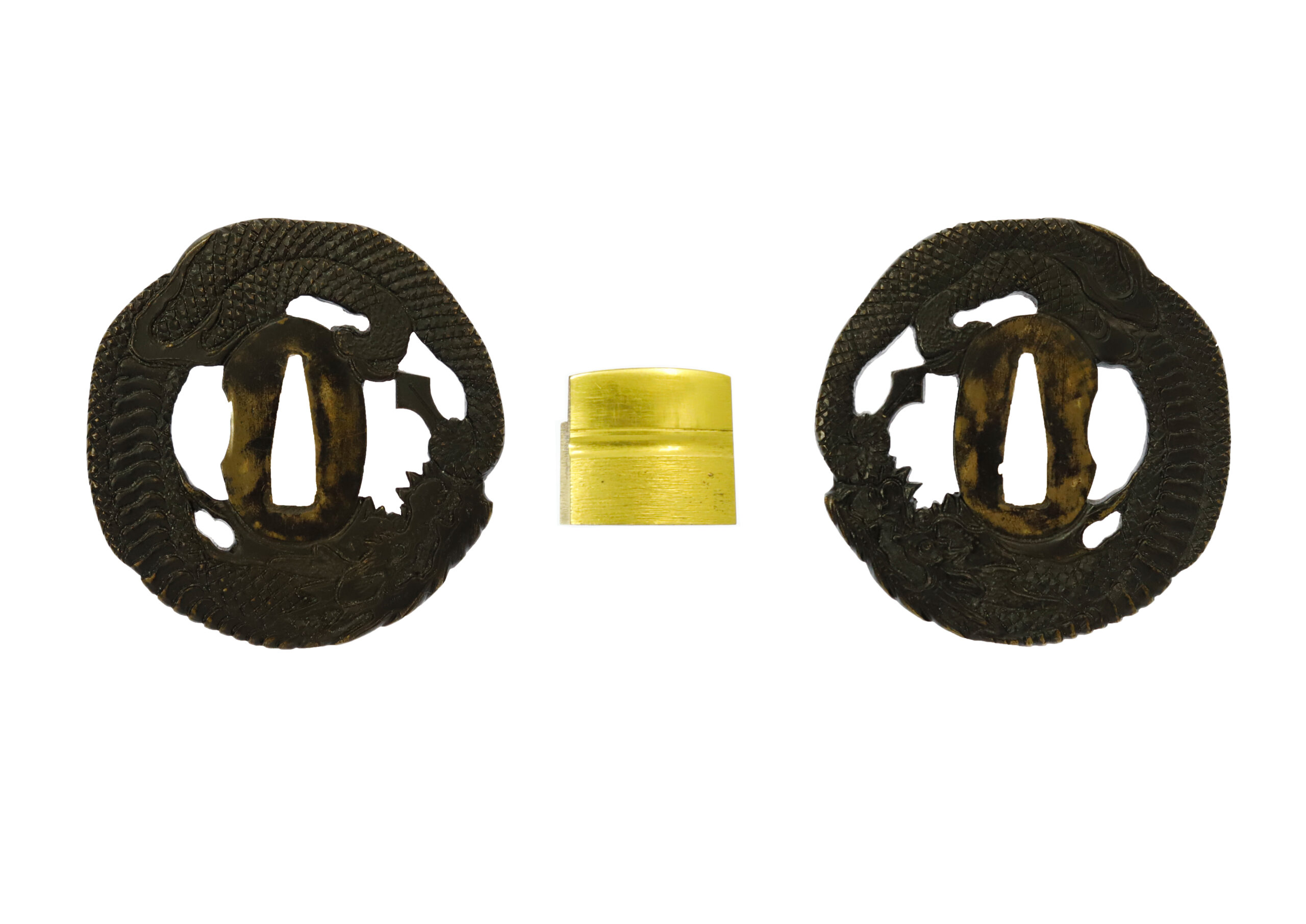
Saya: Saya is the scabbard for the Japanese sword.
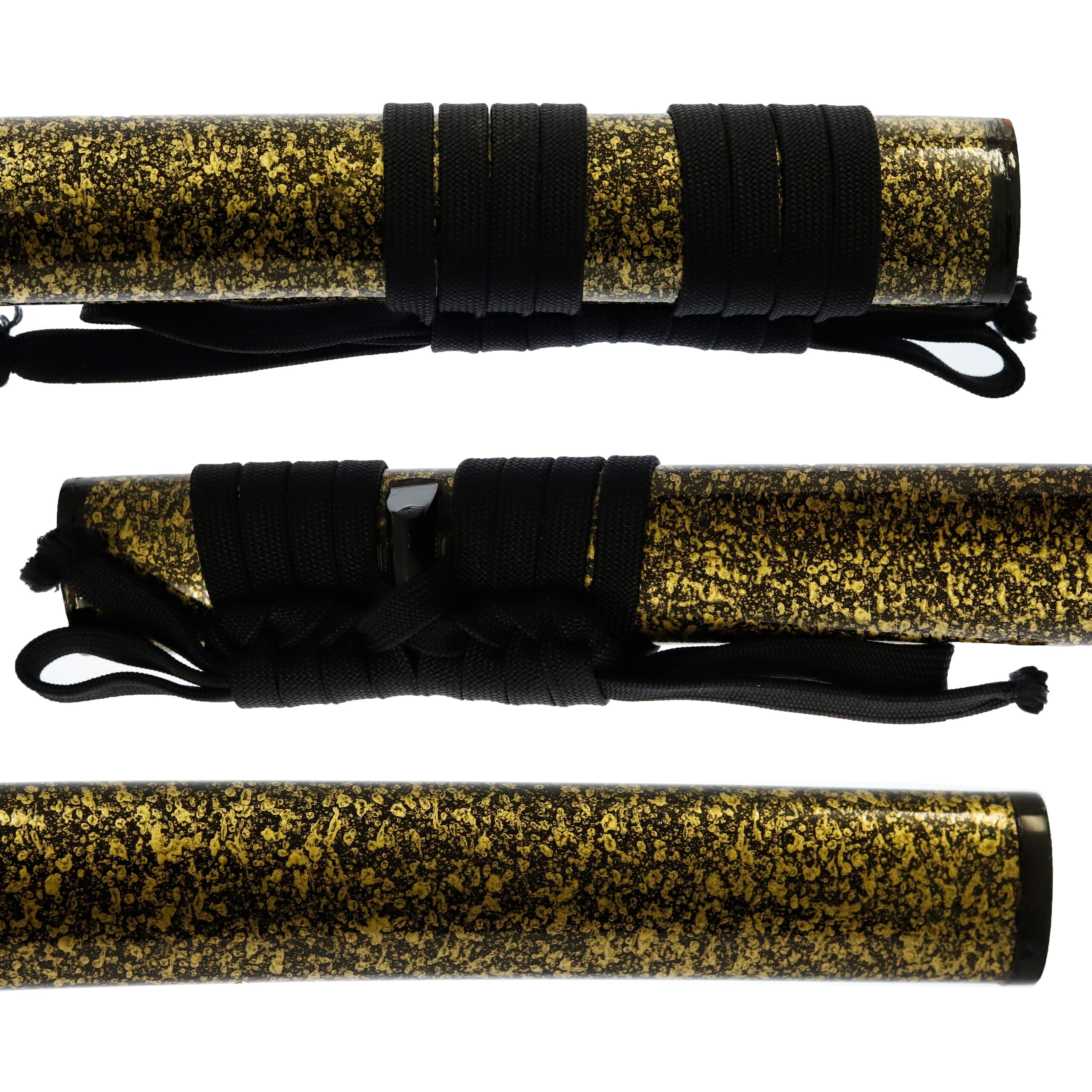
Authentication Paper:NBTHK TOKUBETSU Hozon Certificate for the blade (No. 151294)
NBTHK, also known as Nihon Bijutsu Touken Hozon Kyokai (the Society for the Preservation of the Japan Art Sword), is one of the oldest Japanese sword appraising organizations in modern-day Japan. They authenticated the blade on April 13th in the 18th year of Heisei (2006). They appraised it as Tokubetsu Hozon Touken, the blade especially worth preserving for Japanese society. The purchaser will receive this original certificate as well. We can also translate what is written into English and make a PDF file for your record if you request.
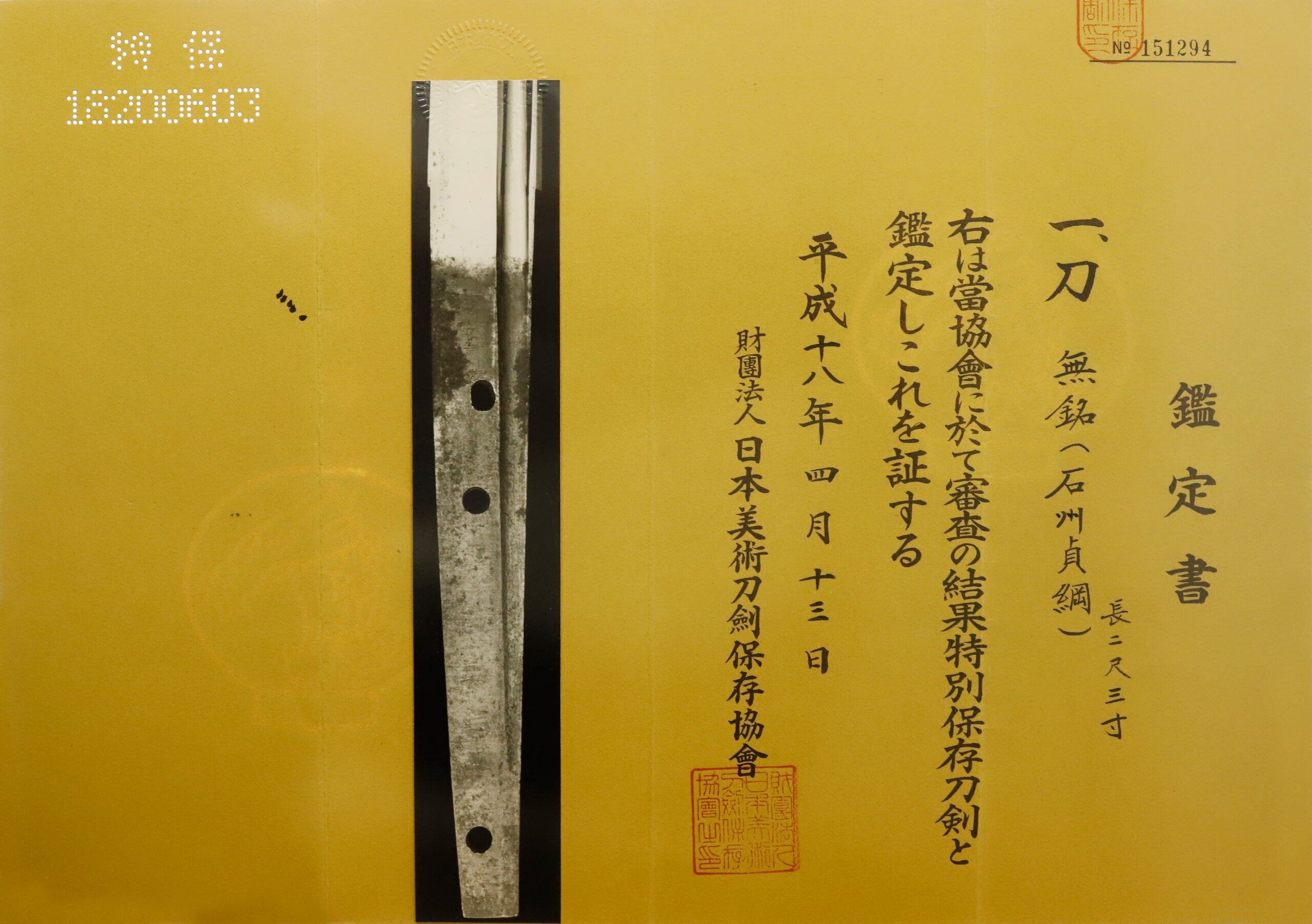
Registration Number : Kumamoto 23132
The Board of Education in Kumamoto prefecture issued a registration paper for this sword . It is called Jyu Token Rui Torokusho(銃刀剣類登録証). Bunkacho(The Agency for Cultural Affairs) acknowledges a Japanese sword with this paper as a work of art.
The sword needs to be traditionally hand-forged and made of Tamahagane carbon steel to be registered in the system. With this paper, its owner in Japan can legally own an authentic Japanese sword. Based on this registration number, we will apply for its export permit.
This paper will need to be returned to the board of education when the sword is being shipped abroad, but you can receive a copy of it. An English translation of this registration paper is available on request.

—————————————————————–
【About us】
Samurai Museum is located in Tokyo, Japan, exhibiting antique artifacts related to the Samurai history. Samurai Museum Shop is the place for those who are interested in Japanese culture and craftsmanship. We deal with antique Samurai swords/armor, traditional crafts made in Japan and so on.
【Japanese Sword& Export Process】
The Japanese swords we deal with are hand-forged edged swords made in Japan. It was made from the traditional carbon steel called TAMAHAGANE(玉鋼). Samurai Museum is familiar with the proper legal procedure for an antique/ authentic Japanese sword to be exported from Japan. We have sent more than 700 Japanese swords for the past few years (~2024) to amazing owners who appreciate its historical value.
Each Japanese sword is registered under the Agency for Cultural Affairs and the Board of Education in Japan. They issue a registration paper for each Japanese sword for its owner in Japan to legally possess it. The Japanese sword with its registration paper means it was traditionally hand-forged in Japan.
To legally export the sword from Japan to other countries, we will have to apply for its permit to the Agency for Cultural Affairs(Bunkacho) and return the original registration paper to the Board of Education. It normally takes around 2-4 weeks to receive this permit after submitting required documents. And we would like you to expect at least 1-1.5 months for your order to arrive at your given address after you ordered. For more detailed info, please click here.
It is allowed for residents in Japan to own authentic Japanese swords without a special license as long as they come with registration papers. Please feel free to contact us if you are a resident of Japan, whether temporarily or permanently. We will also assist you when you leave Japan and need to obtain the export permit.
【Payment Method】
We accept payment through Stripe (Credit card), PayPal, Apple Pay or ChromePay, all of which are secure payment methods. Also, you don’t need to make an account on Stripe for the checkout. If you prefer other payment method, please contact us. After confirming your payment, we will apply for an export permit. You may either pay in JPY, USD, AUD, CAD,EUR CHF or GBP. The price is set in Japanese Yen. Prices in other currencies are automatically calculated based on the latest exchange rate.

* If the amount is above 1 million JPY, Stripe or wire transfer will be the only options for payment.
【Shipping】
We have shipped authentic Japanese swords to the USA, UK, Canada, Mexico, Germany, France, Hong Kong, Finland and Australia. If you don’t live in these countries and like to order, please contact us first before making a purchase. We offer Free International Shipping as long as we can send antique Japanese swords by EMS.
We normally ship by EMS(Express Mail Service) provided by Japan Post. We will send you a tracking number for your order as soon as we hand it to the post office. We will put 100 % insurance on the shipping document without any extra charge. Based on the total amount, there might be a duty tax or other fee for you to pay, depending on the countries. We use package cushioning to protect the item and put it in a PVC pipe, which is one of the most secure packages because of its durability.
It will normally takes 5-14 days for the item to arrive at your given address after we dispatch it. Time of delivery is estimated as accurately as possible by the carrier but does not take into account any delays beyond our control such as by inclement weather, post office holiday seasons.
* If you live in Australia and like to purchase an authentic Japanese sword, please click here to know the detail.

【Review】
Here is one of the reviews we received from a customer who purchased an authentic Japanese sword from us. For more reviews, please click here.
“My experience overall with the whole process was wonderful. I had many questions about the history and process to purchase these treasures. All my questions were answered very timely and complete. The staff is very knowledgeable and very well versed if any questions do arise.”
【How to make sure the condition】
Please keep in mind that what you are going to purchase is an antique item. We uploaded high resolution photos for you to check its condition thoroughly. If you like to see more photos with different angles, please feel free to contact us. We will be happy to send them to you so that you can make informed decision. It is essential for us to know that you are happy with your choice of a sword. and we are prepared to use the best of our ability to serve you.
【How To Contact Us】
Please contact us through email, Facebook Messenger or Live Chat if you have any questions. You can find each icon on the right side of the website. Please click one of them to reach us. We will reply to you within 1-2 business days.
【The Art of Nihonto (Japanese Sword)】
Samurai’s history is a profound, eloquent legacy of ancient Japanese warriors in which millions of people worldwide are being fascinated. If you like to find out the art of Nihonto, please click here.
【A Guide to Japanese Sword Maintenance】
After acquiring an genuine Japanese sword, it is also important to know how to take good care of it. Here is the special video for you. Mr. Paul Martin, Japanese sword expert, shows you how to give proper maintenance to your sword. By mastering how to clean the Japanese sword, its aesthetic beauty will last forever.
When you purchase a Japanese sword from us, you can get a Free Japanese sword maintenance kit. It comes with four tools(Choji Oil, Uchiko Whetstone Powder, Peg remover, Oil Applicator). By watching the video instruction above , you can enjoy learning how to maintain your Japanese sword while appreciating it. If you have any difficulty assembling the sword or cleaning the blade, you can feel free to contact us.


MORE ANTIQUE JAPANESE SWORD FOR SALE
SWORDS WITHOUT CERTIFICATES FOR SALE
LEARN JAPANESE SWORD TERMINOLOGY
Thank you for reading all the information on the page. If you have any difficulty choosing the right Japanese sword for you, we will be more than happy to help you find the one that speaks to you the most. Please feel free to contact us.

